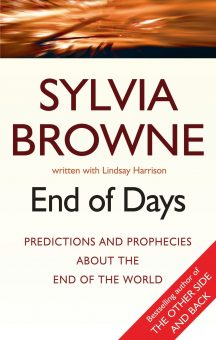Out of family necessity, the young Herbert George’s school years were interrupted by a job as a draper’s apprentice. When he returned to school he focused his studies on the sciences, received his bachelor’s degree, and taught school until, in 1893, he began writing full time.
In the meantime, Wells was launching what can politely be described as a colorful personal life. In 1891, the year after he graduated from college, he married his cousin Isabel. To support both his wife and his parents, he worked two jobs and was rewarded with a case of tuberculosis. He then left Isabel for one of his students, a young woman named Amy Catherine Robbins, whom he married in 1895 and with whom he had the only two legitimate children of the seven he ultimately fathered.
Fortunately for the literary world, Wells also channeled his passion into his first book, The Time Machine, the story of a man returning from a trip to the year 802701. It’s a fascinating combination of parody and dark science fiction. But the technical principles and details of the time machine itself exposed Wells’s unanticipated foresights into nonfiction science and physics—The Time Machine, for example, alluded to a time-space continuum years before Einstein published his theory on that same subject.
As his literary success grew, with such science fiction ground-breakers as The War of the Worlds and The Island of Dr. Moreau, his reputation as a conflicted, outspoken, and often radical social commentator grew as well. He championed the lower classes and so passionately believed in a fair and equal community of humankind that he joined a London socialist organization called the Fabian Society. But he and its leaders, particularly author George Bernard Shaw, quarreled constantly, and Wells used his contentious relationship with the Fabian Society as the basis for his novel The New Machiavelli.
H. G. Wells was also a passionate believer that, no matter how bleak it might seem because of man’s inhumanity to man, the future was still very much worth fighting for. That basic theme inspired a prolific array of nonfiction work, including The Outline of History, which was the twentieth century’s second-bestseller. His articulate insights led to his membership on the Research Committee for the League of Nations; meetings with Lenin, Stalin, and Franklin Roosevelt; and a candidacy for the British Parliament.
By the time of his death on August 13, 1946, H. G. Wells had written more than a hundred books, only about half of them fictional, and he had predicted all of the following on paper, years before each of them became a reality:
- the atomic bomb
- England’s entering the Second World War in 1940
- the London Blitz
- the military vehicle we know as the tank
- the military use of airplanes
- superhighways
- computers
- urban overcrowding
- uranium bombs
- VCRs
- television sets, on which news would be broadcast
H. G. Wells was subject to depression, darkness, and pessimism. The epitaph he wrote for himself read, “God damn you all, I told you so.” Which frankly makes his view of the world’s potential for endless longevity all the more surprising and touching: he genuinely believed that if humankind would transcend its self-destructive behavior, he envisioned an indestructible world of peace, cooperation, and freedom from habitual hatreds, bigotry, and class-consciousness by the middle of the twenty-first century. Whether or not this planet survives, and we humans survive on it, in other words, is completely our choice and our responsibility.
Pages: 1 2 3 4 5 6 7 8 9 10 11 12 13 14 15 16 17 18 19 20 21 22 23 24 25 26 27 28 29 30 31 32 33 34 35 36 37 38 39 40 41 42 43 44 45 46 47 48 49 50 51 52 53 54 55 56 57 58 59 60 61 62 63 64 65 66 67 68 69 70 71 72 73 74 75 76 77 78 79 80 81 82 83 84 85 86 87 88 89 90 91 92 93 94 95 96 97 98 99 100 101 102 103 104 105 106 107 108 109 110 111 112 113 114 115 116 117 118 119 120




